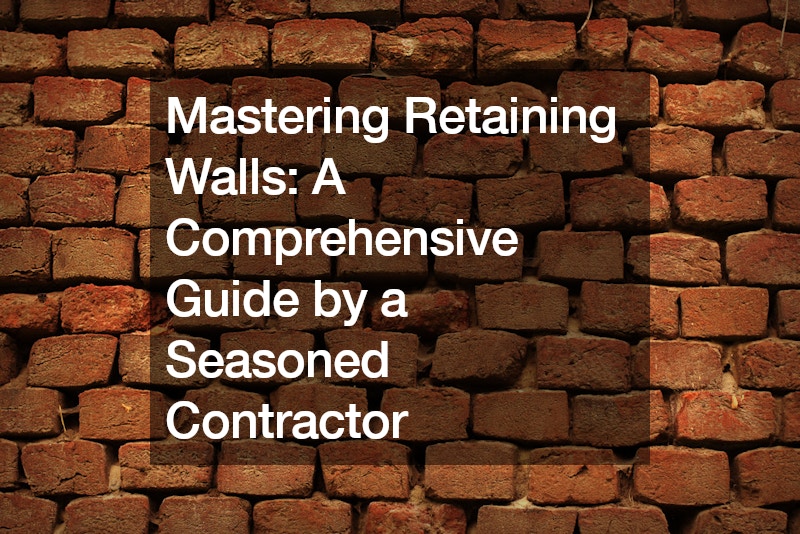Retaining walls play a crucial role in landscaping, providing stability and structure to sloped terrain. Whether you’re dealing with a slight incline or a steep hillside, understanding the fundamentals of building a retaining wall is essential. In this comprehensive guide, we’ll delve into the key steps involved in constructing a sturdy and functional retaining wall.
Planning and Design: Before embarking on any construction project, careful planning is paramount. Begin by assessing the site and determining the height and length of the retaining wall.
Consider factors such as soil composition, drainage requirements, and local building codes. This initial planning phase lays the foundation for a successful project.
Foundation Preparation: A solid foundation is critical for the stability of a retaining wall. Start by excavating a trench of sufficient depth and width to accommodate the base layers. Ensure the trench is level and compacted to provide a stable surface for the wall.
Gravel Base Installation: Once the trench is prepared, it’s time to add the gravel base. Layering gravel in two-inch increments and compacting it with a tamper ensures a firm foundation for the retaining wall. This step is essential for distributing the weight of the wall and preventing settling over time.
Block Placement: Choosing the right blocks for your retaining wall is crucial. Opt for blocks with a lip or interlocking design for added stability. Begin by laying the first course of blocks on the gravel base, ensuring they are level and aligned properly. Stagger the seams between blocks to enhance structural integrity.
Backfilling and Drainage: Behind the retaining wall, add a layer of gravel for drainage. This allows water to escape, reducing pressure on the wall and minimizing erosion risk. Backfilling with soil and compacting it ensures stability and prevents soil movement behind the wall.
Finishing Touches: Once the retaining wall is built, add topsoil to the exposed surface for planting vegetation or creating a finished landscape. Secure the top layer of blocks with adhesive to prevent displacement and ensure long-term stability.
Considerations for Retaining Wall Contractors: As a retaining wall contractor, it’s essential to understand the unique challenges and considerations involved in building retaining walls. From site assessment to proper installation techniques, attention to detail is key. Additionally, staying up-to-date with local building codes and regulations ensures compliance and client satisfaction.
In addition to providing structural support and preventing soil erosion, retaining walls offer a range of benefits for property owners. These walls create usable space on sloped terrain, allowing for the installation of gardens, patios, or seating areas. By leveling out uneven ground, retaining walls improve accessibility and safety, reducing the risk of slips and falls. Moreover, these structures can enhance the aesthetic appeal of outdoor spaces, adding visual interest and defining distinct areas within the landscape. Retaining walls also contribute to property value by increasing curb appeal and creating a more functional and attractive environment for homeowners and visitors alike.
In conclusion, mastering the art of building retaining walls requires careful planning, proper technique, and attention to detail. Following the steps outlined in this guide, retaining wall contractors can create durable and visually appealing structures that enhance the landscape and provide lasting value.
.

